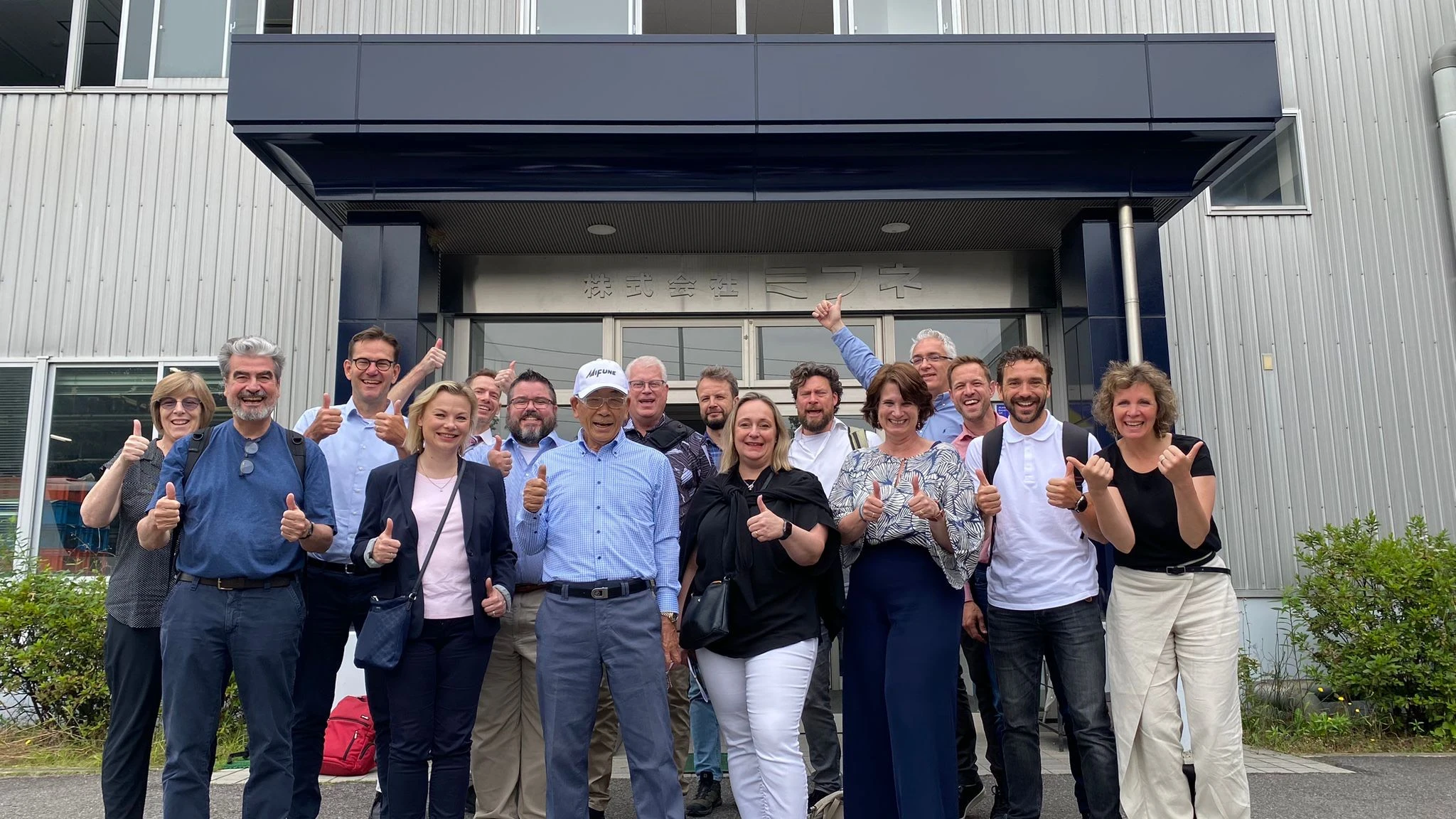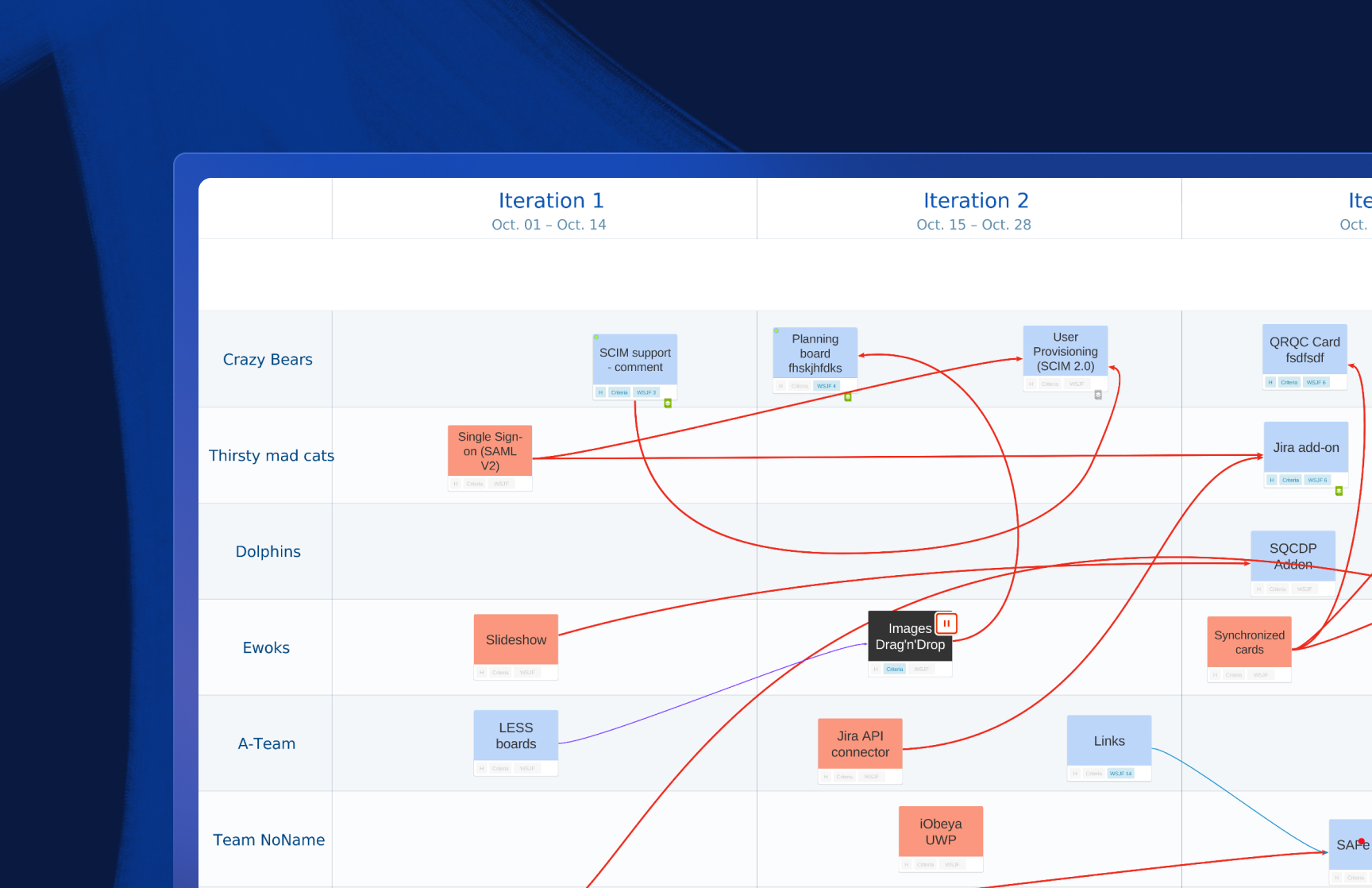Hey, let’s start your
iObeya journey!
In this podcast discussion Carol McEwan delves into business agility and OKRs (Objectives and Key Results) and shares several key points to help organizations understand and implement these concepts effectively.
Defining Business Agility
Let’s start with a definition of business agility from the Business Agility Institute : “Business agility is a set of organizational capabilities, behaviors, and ways of working that afford your business the freedom, flexibility, and resilience to achieve its purpose, no matter what the future brings.” This definition emphasizes the importance of aligning the organization’s capabilities with its purpose.
Understanding OKRs
The goal-setting framework , OKRs, helps organizations set and achieve ambitious goals. The goal is not to set easily achievable objectives but to push boundaries and create a framework for achieving them. OKRs consist of Objectives (what needs to be achieved) and Key Results (specific measurable outcomes).
Tying OKRs to Business Agility
OKRs play a crucial role in achieving business agility by providing a clear structure for goal-setting at various levels of the organization. It ensures that objectives set at the team level align with those at the leadership or strategic level, fostering a cohesive approach throughout the organization.
Importance of Communication and Collaboration
Communication and collaboration play an important role in achieving business agility. It’s not just about having OKRs but also creating a collaborative environment where teams understand how their work contributes to the overall objectives and purpose of the organization.
Balancing Autonomy and Guardrails
To implement OKRs successfully, it’s crucial to strike a balance between providing autonomy to teams and setting up guardrails. Autonomy allows teams to make decisions, but guardrails ensure alignment with the overall organizational objectives. Regular check-ins and triggers help maintain this balance.
Accelerating Business Agility
The podcast touches on the misconception that agility is only for software developers. Business agility spans all aspects of an organization, including HR and marketing. Breaking down silos and fostering a mindset of collaboration across different functions is essential for true business agility.
Measuring Success
Success in implementing business agility with OKRs can be measured through various metrics. NPS (Net Promoter Score) reflects customer satisfaction, and financial indicators like the bottom line and sales growth are vital. The key is to balance financial success with customer-centric approaches .
Advice for Businesses Pursuing OKRs and Business Agility
For organizations exploring the use of OKRs to accelerate business agility, the advice is to view it as a holistic system. Understand that it takes time to implement, find tools that work for your organization, and create a comprehensive system or value stream that aligns with your business objectives.
Closing Thoughts
In summary, business agility and OKRs are interconnected by nature and it’s important to have a collaborative, customer-centric approach across all levels of the organization. Successful implementation requires a mindset shift, effective communication, and a balanced mix of autonomy and alignment with organizational goals.
As Carol and Keara hinted, there’s much more to explore in the realm of Business Agility. Stay tuned for future podcasts where they dive deeper into this intriguing subject.






